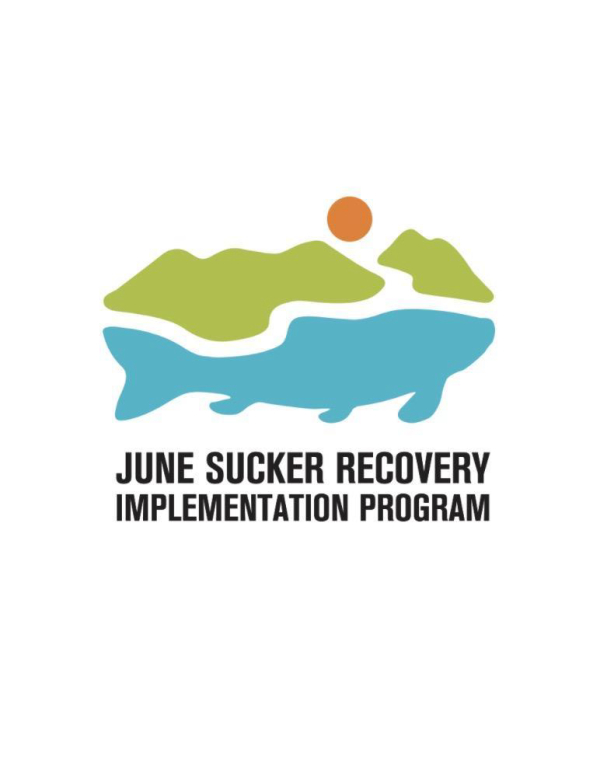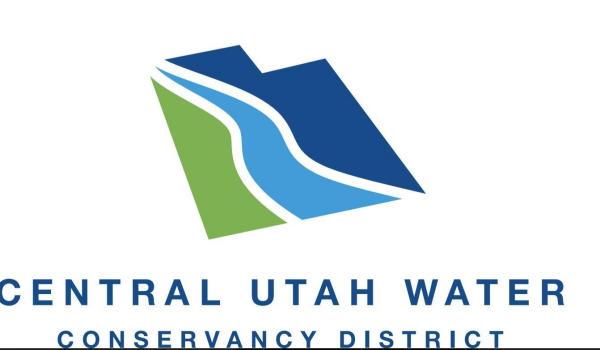

|
SALT LAKE CITY — The Provo River Delta Restoration project broke ground in June 2020, and on Thursday, the project reached another major milestone — the Provo River was diverted into the channels and ponds constructed over the past three years, connecting the river with a restored delta and with Utah Lake.
Project staff, crews and volunteers took time Thursday afternoon to celebrate and watch the diversion, but work to construct the project’s recreational amenities will continue. Public access to the project area will remain closed until project completion and the area is reopened in 2024.
The 260-acre project, located a half-mile north of Utah Lake State Park, is restoring the interface between the Lower Provo River and Utah Lake as another step toward recovering the threatened June sucker, a fish found nowhere else in the world. On Jan. 4, 2021, the June sucker was downlisted from endangered to threatened under the Endangered Species Act, largely due to ongoing efforts — like the Provo River Delta project — by various partnering agencies to help the species recover. The restored delta will provide habitat for adult June suckers to spawn and for young June suckers to find safety from predators.
“Diverting the Provo River into the re-created delta is a huge step forward in the effort to recover the threatened June sucker,” Central Water Conservancy District General Manager Gene Shawcroft said. “The delta project has been a long time coming and, when completed, will finally open the bottleneck that has kept the June Sucker Recovery Implementation Program from successfully re-establishing all June sucker life cycles. The delta will provide the opportunity for successful spawning, rearing and recruiting of new June suckers. The Central Utah Water Conservancy District has been a leader in the June sucker program from its inception and continues to serve as a program partner and a joint lead agency in the Provo River Delta Project.”
“The release of water into the Provo River Delta Restoration Project area represents a significant milestone in both the project and the recovery of June sucker,” Utah Reclamation Mitigation and Conservation Commission Executive Director Mike Mills said. “While a great deal of work remains before the delta is finished, we are now even closer to providing essential habitat for June sucker and creating a unique natural area that will benefit all who use Utah Lake.”
“Accelerated by historic investments from President Biden’s Bipartisan Infrastructure Law, we are able to celebrate a major milestone for the Central Utah Project Completion Act,” U.S. Department of the Interior Assistant Secretary Tanya Trujillo said. “The reconnection of the Provo River to the delta will help to safeguard the threatened June sucker, expand recreational opportunities for community residents and accelerate efforts underway to expand access to clean, reliable water throughout the region.”
Since 2020, the following work has been completed as part of the project:
Approximately 23,050 linear feet of new channel has been built.
Skipper Bay Dike, along the west of the delta project, has been lowered to allow Utah Lake to connect with the delta when the lake level is above 4,487 feet.
Construction of all delta channels and ponds has been completed.
Over 150,000 native plants have been planted in the project area.
An irrigation well was drilled and installation of an irrigation system is ongoing — this will help provide water for recent plantings.
Approximately 58 acres of habitat have been seeded and mulched.
Phragmites and other invasive plants across the site have been controlled or contained.
Along with helping June sucker recovery, the project will provide an improved ecosystem and additional recreational opportunities. Trails, trailhead parking areas, restrooms, non-motorized boat launches, fishing platforms, interpretive features, a wildlife-viewing tower and a new park are all included in the Provo River Delta project plans.
Other upcoming work includes:
Downsizing the existing Provo River between Lakeshore Drive and Lakeview Parkway.
Installing a small dam close to Utah Lake State Park, in order to maintain water levels in the existing Lower Provo River channel.
Constructing berms along the south edge of the delta and the new Provo River channel east of Lakeview Parkway.
More information is available on the project website, provoriverdelta.us.
“By taking an ecosystem-based approach grounded in sound science, over the past 20 years, the June Sucker Recovery Implementation Program has made tremendous strides towards recovering one of the most imperiled species native to Utah,” June Sucker Recovery Implementation Program Director Chris Keleher said. “The effectiveness of the program would not be possible without each of the partners working within their respective authorities to address the threats to June suckers. A major threat has been the lack of habitat for early life stages of the fish to grow and avoid predators. Thanks to the joint-lead agencies, the restoration of the Provo River Delta project completes this essential element to recovery.”
Several organizations are involved in the massive Provo River Delta project and recovery of the June sucker, including:
Utah Reclamation Mitigation and Conservation Commission
Central Utah Water Conservancy District
June Sucker Recovery Implementation Program
U.S. Department of the Interior
U.S. Fish and Wildlife Service
U.S. Bureau of Reclamation
Provo River Water Users Association
Provo Reservoir Canal Users Company
Utah Division of Water Quality
Utah Department of Natural Resources and Utah Division of Wildlife Resources
Local governments, landowners and other outdoor and recreational interest groups
While it’s hard to pinpoint an exact cause for the decline of the June sucker, water-flow alterations and drought, habitat changes, and competition with and being preyed on by exotic fish species were all contributing factors. At one point, the June sucker population dropped to fewer than 1,000 fish with fewer than 300 spawning individuals, and they were placed on the endangered species list in 1986.
However, in 2002, several local and federal agencies and outdoor and environmental interest groups partnered to work to restore June sucker populations. As of 2021, there is an estimated total of 30,000 to 50,000 fish in the spawning population. Along with addressing streamflows in two tributaries to the lake, the partnership also worked to establish a June sucker hatchery and culture program at the Utah Division of Wildlife Resources Fish Hatchery in Logan. A special water-recirculation facility is used there to quickly grow the fish in warmer water. Then, once they are big enough, the fish are restocked into Utah Lake to help the population grow.
###